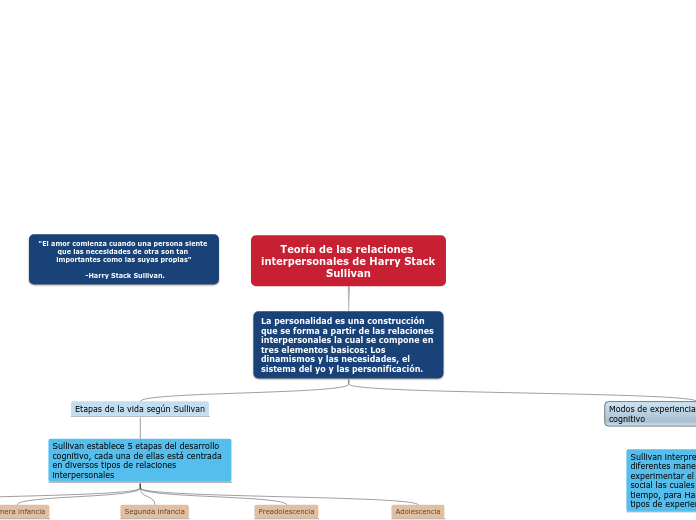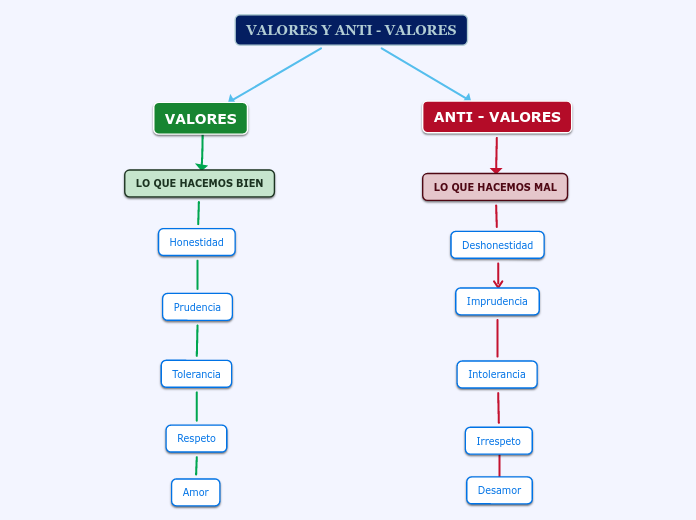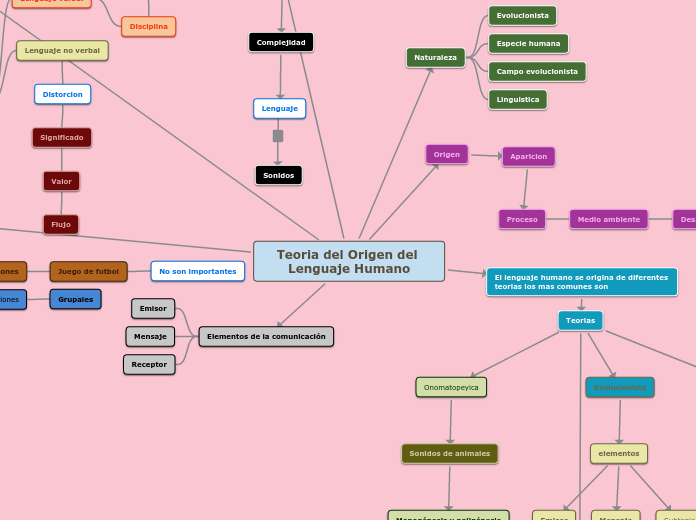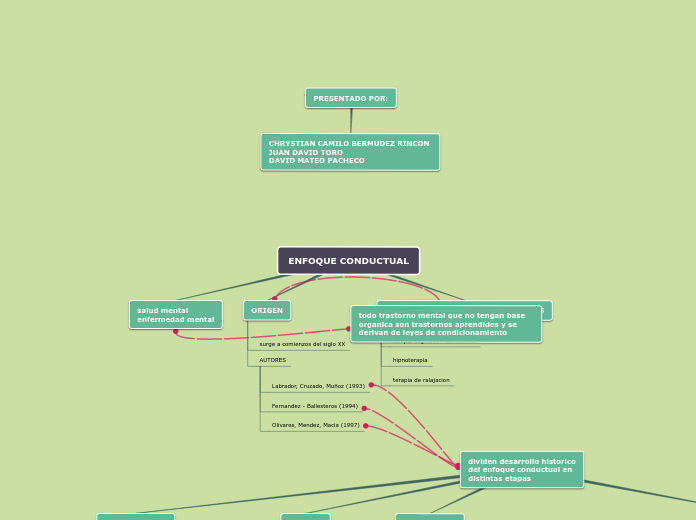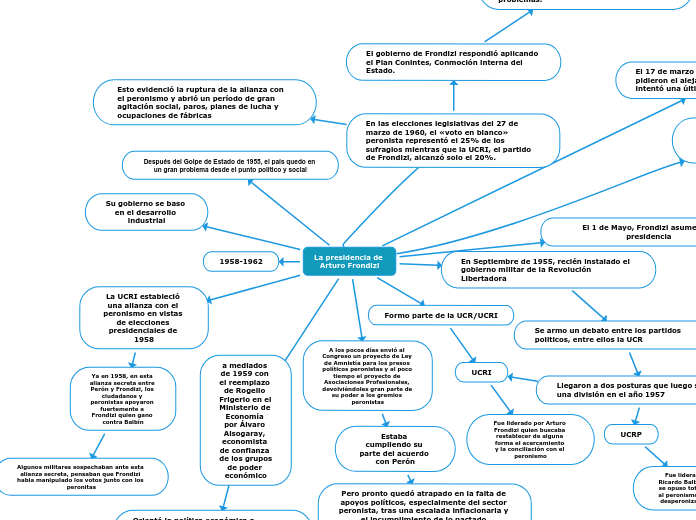"El amor comienza cuando una persona siente que las necesidades de otra son tan importantes como las suyas propias"
-Harry Stack Sullivan.
Teoría de las relaciones interpersonales de Harry Stack Sullivan
Type in the name of the multiple-perspectives text.
Example: Bridge to Terabithia by Katherine Paterson
La personalidad es una construcción que se forma a partir de las relaciones interpersonales la cual se compone en tres elementos basicos: Los dinamismos y las necesidades, el sistema del yo y las personificación.
Identify an important issue from the text that is being presented from different angles. Type it in.
Example: Jesse's drawing talent.
Modos de experiencia del desarrollo cognitivo
Sullivan interpreta que hay diferentes maneras de experimentar el entorno físico y social las cuales cambian con el tiempo, para Harry hay tres tipos de experiencias:
Modo sintáctico
está tiene que ver con las experiencias de comunicación con otro individuo y aparece cuando el desarrollo de la personalidad es saludable.
Modo paratáctico
está hace énfasis en las experiencias que incluyen símbolos privados y autistas o con significado exclusivamente propio
Type in a relevant quote that highlights the character's point of view towards
Sullivan interpreta que hay diferentes maneras de experimentar el entorno físico y social las cuales cambian con el tiempo, para Harry hay tres tipos de experiencias:.
Try following a citation format: author's name, chapter, and page.
Example: 'Jesse drew the way some people drank whiskey. (...) Lord, he loved to draw. (...) When he was in first grade, he told his father that he wanted to be an artist when he grew up.' (Paterson, 2. 7)
Modo prototáctico
se refiere a las vivencias que tienen lugar antes de que la persona sea capaz de simbolizar la realidad.
Etapas de la vida según Sullivan
Sullivan establece 5 etapas del desarrollo cognitivo, cada una de ellas está centrada en diversos tipos de relaciones interpersonales
Adolescencia
necesidad de compartir una relación especial con personas de sexo opuesto
Desde la pubertad hasta la edad adulta
Preadolescencia
Decide on the fourth point of view
Type in the name of the last character whose perspective on the issue you are going to present.
Example: Leslie Burke, Jesse's new next-door neighbor, and best friend.
Intimidad genuina con amigos del mismo sexo
Point of view
Type in a relevant quote that highlights the character's point of view. Try to follow a citation format: author's name, chapter, and page.
Example: I can't get the poetry of the trees,' he said. She nodded. Don't worry,' she said. You will someday. He believed her.' (Paterson, 4. 24)
De los 8 a los 12 años
Segunda infancia
Whose character does the third point of view belong to?
Type in his/her name.
Example: Mr. Aarons, Jesse's father.
Aprende a gestionar sus propias necesidades
What does the character think, say or do that suggests their perspective on the issue?
Type in a quote and try to maintain the citation format.
Example: 'He would like to show his drawings to his dad, but he didn't dare. (...) He'd thought his dad would be pleased. He wasn't. What are they teaching in that damn school? he had asked.' (Paterson, 2.8)
De los 5 a las 8 años
What kind of narration introduces the viewpoint?
Choose an answer:
First person point of view - using the personal pronouns 'I' or 'we'Second person point of view - using the personal pronoun 'you'Third person point of view - using the third-person pronouns 'he', 'she' and 'they'Omniscient point of view - an all-seeing observer tells the story
Primera infancia
Decide on the second point of view
Name the character (it can either be the main character or one of the supporting characters) whose point of view you are presenting.
Example: Miss Edmunds, Jesse's music teacher.
Los padres se consideran fuente de elogio y aceptación
Type in a quote that points out the character's position about the issue.
Try to follow a citation format: author's name, chapter, and page.
Example: 'She said he was unusually talented, and she hoped he wouldn't let anything discourage him.' (Paterson, 2. 8)
Desde la aparición del habla hasta los 5 años
How is the viewpoint introduced in the story?
Choose an answer:
First person point of viewSecond person point of viewThird person point of viewOmniscient point of view
Primer años de vida
Decide on the first point of view you are going to present.
Type in the name of the character (it can either be the main character or one of the supporting characters) whose point of view belongs to.
Example: Jesse Oliver Aarons, Jr., the main character of the novel, a fifth-grader living in a rural Southern area.
Hay necesidad de contacto físico y de ternura
Type in a relevant quote that highlights the character's point of view towards
Sullivan establece 5 etapas del desarrollo cognitivo, cada una de ellas está centrada en diversos tipos de relaciones interpersonales.
Try following a citation format: author's name, chapter, and page.
Example: 'Jesse drew the way some people drank whiskey. (...) Lord, he loved to draw. (...) When he was in first grade, he told his father that he wanted to be an artist when he grew up.' (Paterson, 2. 7)
Desde el nacimiento hasta la aparición del habla
What type of narration introduces the viewpoint?
Choose an answer:
First person point of view - using the personal pronouns 'I' or 'we'Second person point of view - using the personal pronoun 'you'Third person point of view - using the third-person pronouns 'he', 'she' and 'they'Omniscient point of view - an all-seeing observer tells the story
